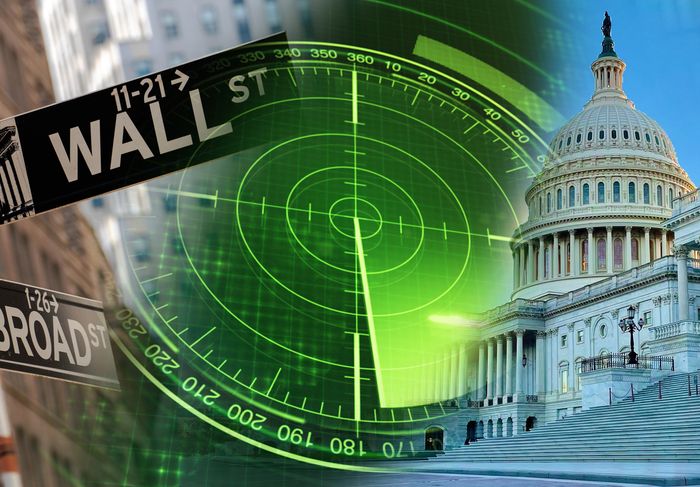: This week’s October inflation data looms large on Washington’s economic radar

Inflation data, a Fed speech and a government-shutdown deadline are on the calendar this week.
MarketWatch photo illustration/iStock
U.S. inflation data for October is clearly the economic highlight for markets, economists and policymakers this coming week. That’s because if price pressures continue their cooling trend from the summer, the Fed might be able to refrain from any more interest-rate hikes.
Here’s a preview of the inflation report and other critical data and events that will have the markets’ attention this week.
See: MarketWatch’s comprehensive economic calendar
October consumer inflation
Tuesday, 8:30 a.m. Eastern
No economic reports matter more for the Federal Reserve’s interest-rate policy outlook than consumer inflation data. Inflation has been trending down since the summer, but many economists are wary that most of the progress was low-hanging fruit, and that it will take a lot to get back to the Fed’s 2% target. Fed Chairman Jerome Powell raised this concern in remarks on Thursday, saying the central bank was concerned about inflation “head fakes.”
Economists polled by the Wall Street Journal expect headline CPI to moderate to a 0.1% rise in October, down from a 0.4% gain in the prior month, and the smallest increase since May.
Over the past year, inflation is expected to rise at a 3.3% rate, down from 3.7% in the prior month.
The improvement is expected to come mainly from gasoline prices.
Core CPI, excluding volatile food and energy prices, is expected to rise 0.3%, matching a 0.3% gain in the prior month. The year-over-year rate is seen holding steady at a 4.1% annual rate.
October retail sales
Wednesday, 8:30 a.m. Eastern
Economists expect retail sales to be weak, falling 0.1% in October after a 0.7% jump in September and a 0.8% gain in August.
The outlook for consumer spending is one of the most intriguing questions about the outlook.
Will the strong spending seen in the late summer fade away? With above-trend job growth and incomes rising, there seems no reason for consumers to pull back sharply. But many economists think that consumers are running out of excess spending power built up during the pandemic.
Also see: Retail earnings begin this week. ‘It’s getting worse,’ an analyst says.
Chicago Fed President Austan Goolsbee’s speech to the Detroit Economic Club
Tuesday at 12:45 p.m. Eastern
There are just under 20 public remarks from Fed officials scheduled this week. One of the highlights will be Chicago Fed President Austan Goolsbee’s moderated question-and-answer session before the Detroit Economic Club.
Goolsbee, who joined the Fed at the beginning of the year, is comfortable speaking in public and on television from his days in the Obama administration, and afterwards as a pundit. His views also carry weight because he will be on any short list of potential replacements for Powell if President Joe Biden wins a second term.
Goolsbee has looked prescient so far. In his first public speeches this summer, he suggested that there could be an improvement in inflation without a big rise in unemployment.
Biden-Xi to meet at APEC summit
Wednesday
Biden and Xi will meet for the first time in a year at the Asia-Pacific Economic Cooperation summit in San Francisco, amid struggles in the Chinese economy and the recent strengthening of ties between XI and Russian Vladimir Putin.
Derek Scissors, a senior fellow at the American Enterprise Institute, said investors should not expect anything market-moving from the talks. The Biden administration simply wants to get face time with Xi, he said.
“The goal is to find out how to reach him, who are you supposed to talk to [to reach him in the future], and then have a good conversation with him where Biden can say a few things that we think he really needs to hear from us,” Scissors said.
Gone are the days when the U.S. and China cooperated on economic issues, he said.
Xi simply doesn’t care that much about the economy, Scissors said. He is more focused on “really strict party control of everything,” he added.
Threat of a government shutdown
Friday, midnight deadline
The federal government will run out of money late Friday unless Congress passes legislation to keep the lights on.
It is the first test for new House Speaker Mike Johnson. He has proposed a two-step government spending plan to keep the government open until early next year, but it remains uncertain whether this will break the logjam.
Late Friday, Moody’s Investors Service lowered its outlook on the U.S. credit rating to “negative” from “stable.”
This is actually positive for the prospects of a congressional deal, said Terry Haines, founder of Pangaea Policy, a political forecasting firm.
Haines said he has lowered the odds of a government shutdown to 30% from 40% before the Moody’s move.
“The last thing House Republicans should want to do…is show newly skeptical markets that they can’t even handle a continuation of government funding,” Haines said, in a note to clients.

Comments are closed.